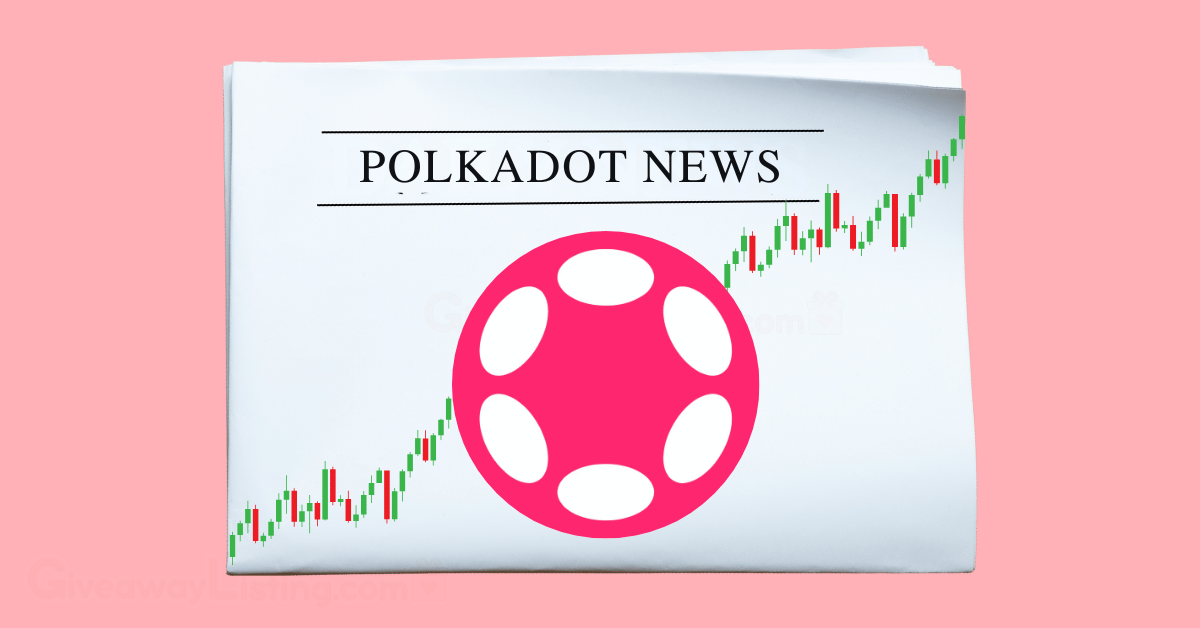Top Polkadot News Today – November 2025
Polkadot is making significant moves this November, exhibiting considerable activity driven by its community and core development teams. The network is undergoing some of its most important data changes, focusing on refining its economic model and expanding its real-world applications. This isn’t just about minor updates; these are foundational adjustments that are getting a lot of attention.
The biggest story circulating is the Polkadot DAO’s official approval of a 2.1 billion hard supply cap for DOT tokens. This represents a significant shift in the network’s tokenomics, transitioning it towards a more scarcity-driven model, similar to Bitcoin. With roughly 1.6 billion DOT already in circulation, this decision puts a finite limit on the total supply, which has big implications for the token’s long-term value proposition. The move was widely supported by the community and is seen as a step toward making DOT a more attractive asset for long-term holders and institutional players.
On the DeFi front, Hydration has launched HOLLAR, a new decentralized stablecoin native to the Polkadot ecosystem. Backed by assets like DOT, ETH, and BTC, HOLLAR is designed to provide a stable store of value within the network. This launch is a key piece of infrastructure, as it addresses the need for a reliable, decentralized stablecoin that isn’t dependent on traditional financial institutions. Even Polkadot creator Dr. Gavin Wood has voiced his preference for a decentralized option like HOLLAR over centralized stablecoins such as USDC or USDT.
In other major network news, Polkadot has officially entered its 2.0 phase after the community passed a key referendum. This upgrade fundamentally changes how the network allocates resources by getting rid of the old parachain slot auction system. It also introduces more flexible scaling options and aims to lower the barrier to entry for developers. As part of this, the annual DOT inflation rate is set to be reduced, which, combined with the new supply cap, further tightens the token’s economic model.
Polkadot is also expanding its footprint beyond the cryptocurrency world. The network is now powering the new IMCF Rewards Program for the Inter Miami CF soccer club. This fan engagement platform uses Polkadot’s tech to offer rewards and immersive experiences to fans, both in the stadium and at home. This partnership is a great example of how blockchain can be applied to create new kinds of user experiences in mainstream industries.
Polkadot Facts and Statistics
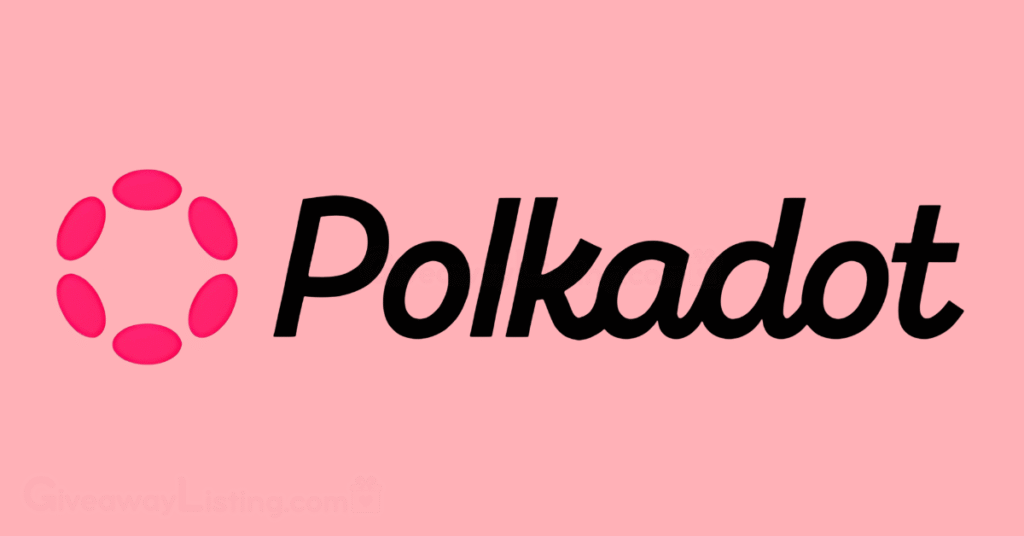
Polkadot’s story began when Dr. Gavin Wood, a co-founder of Ethereum, published the project’s whitepaper in late 2016. He envisioned a network that could solve the persistent problems of blockchain technology: the inability for different chains to communicate with each other and the struggle to handle large volumes of transactions.
After a successful initial coin offering in 2017, the mainnet went live in May 2020, introducing a new architecture built around a central Relay Chain and multiple parallel chains, or “parachains.” This design enables it to process transactions across multiple chains simultaneously, making it highly scalable and efficient.
Here are some of the key facts and figures about the Polkadot network:
- The project was founded by Dr. Gavin Wood, Robert Habermeier, and Peter Czaban.
- The first phase of the Polkadot mainnet launched on May 26, 2020.
- Polkadot’s native token is known by the ticker symbol DOT.
- The DOT token has three primary uses: governance over the network, staking for security and rewards, and bonding to connect new parachains.
- The DOT token reached its all-time high price of $54.98 in November 2021.
- The token’s all-time low was $2.70.
- The Polkadot DAO has approved a hard cap of 2.1 billion DOT. The current circulating supply is approximately 1.52 billion.
- The network can process over 1,000 transactions per second, with theoretical upgrades aiming for speeds as high as 623,000 TPS.
- There are over 600 projects being built on Polkadot, spanning DeFi, gaming, and real-world asset tokenization.
- Polkadot has one of the most active DAOs in the space, with over 1.3 million members represented by on-chain wallets who vote on the network’s future.
- The network’s unique structure allows parachains to benefit from the security of the main Relay Chain, so new projects don’t have to build their security from scratch.
- Polkadot has a “canary network” called Kusama, which serves as a real-world testing ground for new code and features before they are deployed on the main network.
- Instead of competing for limited block space, projects can secure their own dedicated blockchain (parachain) or purchase block space as needed through a model called Agile Coretime.
- Polkadot consistently ranks among the top blockchain networks for developer activity, often second only to Ethereum.
Latest Polkadot News in November 2025

Polkadot’s ecosystem is experiencing considerable activity, with over 600 projects currently building on the platform. The network is buzzing with developments aimed at improving its core functions and expanding its reach. November 2025has been a particularly significant month for the network, marked by numerous announcements and milestones.
A major development this month was the introduction of HOLLAR, designed to bring a new level of stability to Polkadot’s DeFi space. Following that, on September 16, Polkadot’s governance passed a key referendum, officially moving the project into its 2.0 phase. This update eliminates the parachain slot auction system, introduces more flexible scaling, and reduces the entry barrier for developers. On the ecosystem growth front, Velocity Labs launched the DeFi Builders Program on September 3, an initiative to support and fund the next wave of financial applications on Polkadot Hub.
Adding to the stablecoin news, Polkadot’s creator, Gavin Wood, proposed another native stablecoin called PUSD, which is now in the discussion phase. The idea behind PUSD is to distribute block producer rewards in a stable currency, rather than the more volatile DOT token.
The month also saw Polkadot extending its global footprint, with a new partnership between Polkadot Brazil and the Brazilian Cryptoeconomics Association (ABcripto) to boost Web3 education and development in Latin America. The team also presented its latest tech at the TUM Blockchain Conference in Munich.
The crypto world is full of scams and misinformation, and relying on unverified channels can lead to poor decisions. Be sure to stick to official Polkadot channels for the latest information:
The best places to keep up with Polkadot are:
News events often have a direct effect on the price of $DOT. For instance, a governance decision to change the network’s tokenomics or the announcement of a new high-profile partnership can create positive market sentiment.
Conversely, news about network vulnerabilities or delays in the roadmap can cause prices to dip. For a trader, following these developments is just as important as watching the charts.
Breaking Polkadot Price News
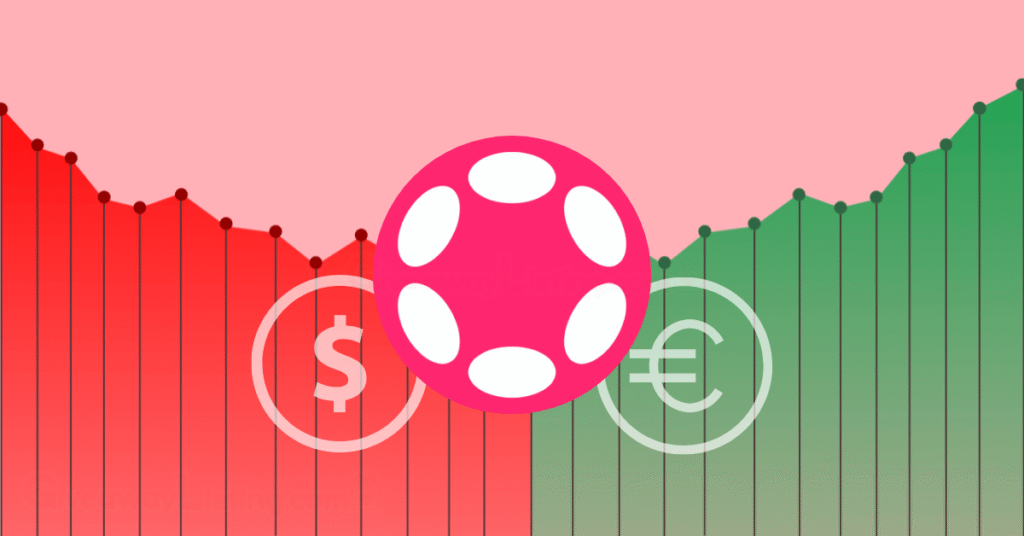
Polkadot’s native token, $DOT, is in constant motion, influenced by a mix of market-wide trends, network-specific developments, and overall trader sentiment. For anyone involved with $DOT, staying up-to-date with price news isn’t just a good idea; it’s essential for making informed decisions and managing risk in a market that can change in an instant.
Over the last several months, $DOT’s price has been in a consolidation phase, trading largely within the $3.95 to $5.30 range. While the broader cryptocurrency market has experienced some fluctuations, $DOT has established a level of stability within this range. This period of sideways movement is seen by some analysts as an accumulation phase, where long-term believers build their positions before the next major market move. Recent price action has seen the token trading around $4.40, still within the established range.
The most significant breaking news to affect $DOT’s trajectory recently was the Polkadot DAO’s approval of a 2.1 billion hard cap on the total token supply. This move was a game-changer for the token’s economic model, shifting it toward a scarcity-based system similar to Bitcoin and Ethereum. The market reacted almost immediately, with $DOT rallying to $4.21 shortly after the announcement as traders priced in the long-term effects of reduced inflation.
This tokenomics update is just one of several bullish catalysts on the horizon. The final stage of the Polkadot 2.0 upgrade, set for October, is expected to introduce elastic scaling. Furthermore, the upcoming Join-Accumulate Machine (JAM) upgrade is set to transform the core Relay Chain, and there is growing speculation around the potential approval of a spot $DOT ETF by November 2025.
These developments create a strong forward-looking narrative for the token, though traders also remain watchful of token unlock schedules, which can temporarily increase selling pressure. Analyzing these trends is key, and a good Polkadot price prediction can help map out potential future movements.
Best Upcoming Polkadot Events in 2025
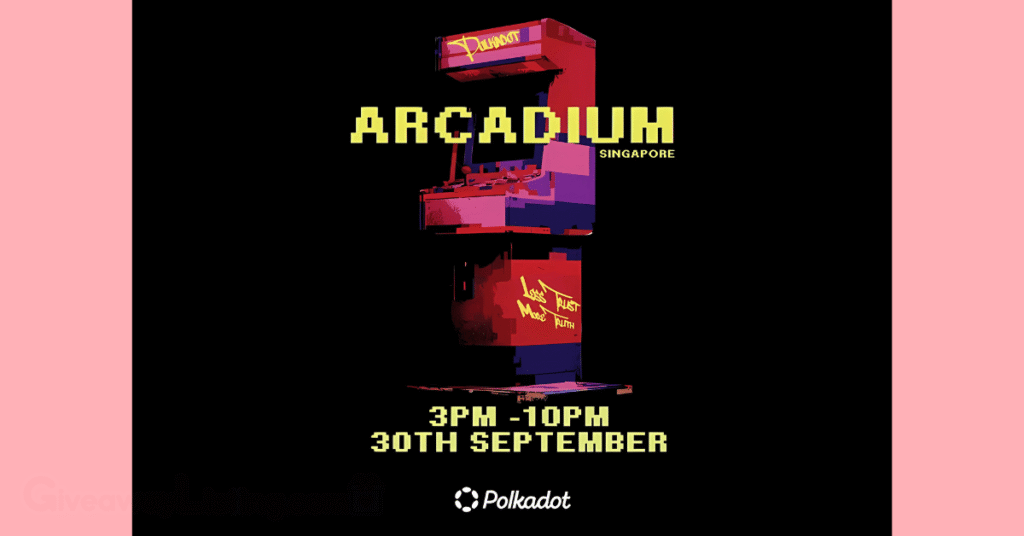
The Polkadot ecosystem has been buzzing with activity following recent appearances at major tech gatherings, including the TUM Blockchain Conference in Munich. These events have set the stage for a packed schedule for the rest of the year, offering something for everyone from hardcore developers to the crypto-curious.
The upcoming months are filled with opportunities to connect, build, and stay informed about what’s next for the multi-chain network. Whether you’re looking to compete for prizes in a hackathon or network with industry leaders, there are several key dates to mark down.
Arcadium by Polkadot: Singapore Token2049
This promises to be a unique blend of old-school fun and new-school tech in Singapore on September 30. Arcadium is a half-day event that combines retro arcade vibes with in-depth conversations about Web3’s future in the APAC region. It’s designed to be an immersive experience for everyone, from seasoned crypto veterans to newcomers just starting to explore the space.
The event will feature panel discussions with prominent figures in the blockchain world, covering topics such as enterprise infrastructure, the maturation of cryptocurrency capital markets, and the future of Web3 gaming. This isn’t your typical stuffy conference; it’s an opportunity to network in a dynamic setting and discover what Polkadot has in store for its expansion in Asia. If you’re in the region for Token2049, this is a side event you won’t want to miss.
Build Resilient Apps with Polkadot Cloud
For builders, Polkadot is hosting a six-week online hackathon from October 6 to November 17, 2025. With a $40,000 prize pool up for grabs, this presents a serious opportunity for developers to showcase their skills. The event’s motto is “radically open, radically useful,” and it encourages participants to create apps with real-world impact using the Polkadot technology stack.
The competition is structured around three main themes: User-centric Apps, Build a Blockchain, and Polkadot Tinkerers. This gives participants a great deal of freedom, whether they want to build a full-fledged application, create a custom blockchain using the Polkadot SDK, or simply experiment with the network’s libraries and tools.
Polkadot at TechCrunch Disrupt
Polkadot is making a significant appearance as the exclusive blockchain sponsor at TechCrunch Disrupt in San Francisco from October 27 to 29. This is a vast platform to showcase how Web3 infrastructure is making waves in industries such as AI, fintech, and enterprise technology. The focus will be on demonstrating how Polkadot enables teams to build and scale next-generation decentralized applications and custom blockchains securely and efficiently.
Attendees can visit the Polkadot booth (M1/M2) for live demos and conversations with experts from the ecosystem. It’s a prime opportunity to see how Polkadot’s technology is being applied to solve real-world problems and to connect with the teams driving this innovation. For anyone interested in the intersection of Web3 and mainstream tech, this will be an essential stop.
sub0 Symbiosis — Polkadot Flagship Conference
From November 14 to 16, Polkadot’s flagship conference, Sub0 Symbiosis, will take over Buenos Aires. This three-day event is expected to bring together 3,000 builders, founders, and Web3 leaders for high-level discussions, workshops, and a 24-hour hackathon with over $15,000 in bounties.
Held at the massive Bubble Studio, the conference promises an immersive experience with multiple stages, a gaming arena, and even a poolside lounge. The theme “Symbiosis” points to Polkadot’s focus on building resilient, privacy-first infrastructure. Attendees will get a firsthand look at the latest developments, including Polkadot Hub and the JAM Protocol. With Devconnect taking place in Argentina the same week, Buenos Aires is poised to become the global hub for all things Web3.
New Polkadot Partnerships
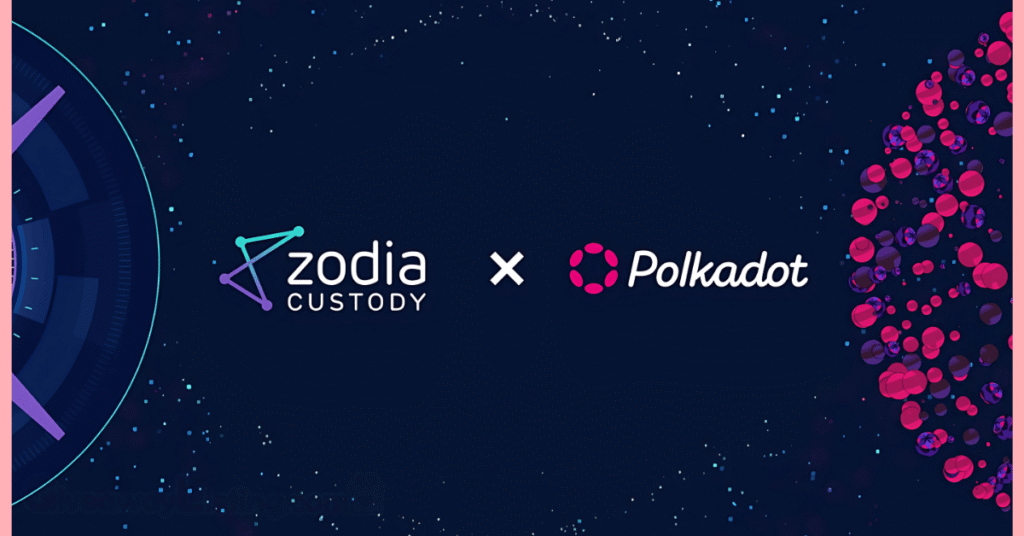
Polkadot’s strategy has always been centered on creating an interconnected ecosystem where different blockchains can communicate and share information. A core part of this vision is forming alliances with a diverse range of companies and projects, including esports teams, financial institutions, and other blockchain networks.
- Inter Miami CF: Polkadot has teamed up with the Major League Soccer club to power its new IMCF Rewards Program. This mobile-first platform creates a gamified experience for fans, allowing them to earn points and redeem them for exclusive merchandise and experiences.
- HEROIC: Polkadot is the official blockchain partner of the top-tier esports team HEROIC. This marketing-focused connection is designed to position Polkadot as a leading blockchain in the gaming world through video content and both virtual and in-person events.
- ABcripto: To expand its presence in Latin America, Polkadot Brazil has partnered with the Brazilian Cryptoeconomics Association (ABcripto). The main objective is to increase access to quality education and support the development of Web3 solutions in the region.
- Velocity Labs: In collaboration with the Web3 Foundation and Parity Technologies, Velocity Labs has launched the DeFi Builders Program. This initiative is designed to support and scale the next wave of decentralized finance applications on Polkadot Hub.
- Chainlink: Polkadot has integrated with Chainlink, positioning it as the primary oracle provider for its ecosystem. This enables developers on Polkadot to securely connect their smart contracts to real-world data through decentralized oracle networks, a critical function for many advanced DeFi applications.
Polkadot Future Outlook

The road ahead for Polkadot is marked by a significant strategic redirection toward a more application-centric model, a move crystallized in the Polkadot 2.0 vision. This new phase replaces the previous parachain auction system with a more flexible mechanism known as Agile Coretime. This allows projects to acquire blockspace on an as-needed basis, substantially lowering the entry barrier for developers.
Further down the line, the Join-Accumulate Machine (JAM) upgrade is set to redefine the network’s core functionality, aiming to create a more versatile and efficient environment for running a multitude of applications directly on a transformed Relay Chain. These changes are designed to improve scalability, with theoretical throughput capabilities exceeding 600,000 transactions per second, and to make the ecosystem more accessible and dynamic for builders.
A cornerstone of this future is the Polkadot Hub, an EVM-compatible chain slated for a late Q4 launch. This development is a direct answer to the need for greater integration with the broader blockchain world, particularly the extensive Ethereum ecosystem. By enabling developers to deploy their Solidity-based smart contracts with minimal adjustments, Polkadot Hub aims to attract a new wave of projects.
This initiative is supported by programs like the DeFi Builders Program, which provides funding, technical support, and mentorship to new teams building on the Hub. The Asset Hub migration, scheduled for November 4th for Polkadot, will also enhance the user experience by reducing transaction fees and supporting a broader range of assets, including stablecoins.
The information provided in this article is current as of November 2025.
Polkadot News FAQs
Here are answers to some frequently asked questions about Polkadot.
What’s Happening With Polkadot?
Polkadot is rolling out its 2.0 upgrade, replacing parachain auctions with a more flexible “Agile Coretime” system for developers. The community also recently approved a hard supply cap of 2.1 billion DOT tokens, fundamentally changing its economic model to introduce scarcity. Additionally, the EVM-compatible Polkadot Hub is planned for a late Q4 launch to attract more application builders.
Can Polkadot Reach $10?
A return to $10 is considered a realistic target if the Polkadot 2.0 upgrades successfully stimulate ecosystem growth and a broader market uptrend occurs. Some analysts project a price surge to around $8.50 within the next year based on current adoption metrics. The main driver will be the network’s ability to attract new developers and applications with its updated architecture.
Can Polkadot Reach $50 Again?
Reclaiming its previous high of nearly $55 is a long-term possibility that would require significant market-wide momentum and widespread adoption of its technology. A bullish scenario suggests a potential return to $55 by the end of 2026, assuming the 2.0 vision is fully realized. Other long-term price predictions, however, remain more conservative for the coming years.
Should I Invest in Polkadot 2025?
Investing in Polkadot for 2025 means considering its technological roadmap against existing market competition and volatility. The recent decision to cap the total DOT supply is a strong point for potential long-term value. With over 600 active projects, the ecosystem is growing, but it faces stiff competition from other established blockchain platforms.

